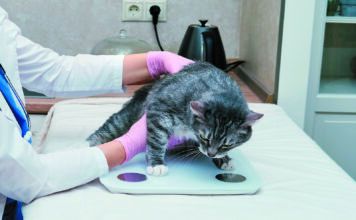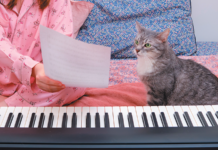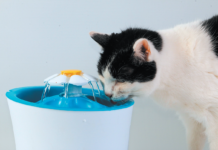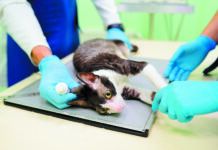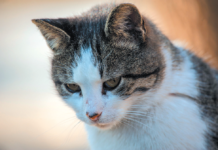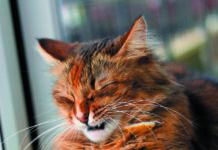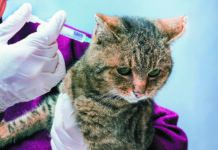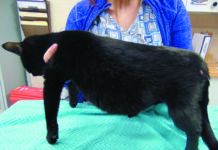Can an old cat withstand the anesthesia?
Q: I have a 14-year-old cat who needs surgery. But at that age, will she be able to tolerate the anesthesia?
Cat’s got rhythm
Q: My wife and I have noticed that when we put on soft classical numbers, our cat seems to settle in and become calmer. Are we imagining this, or might she actually be responding to the music?
Increased Thirst May be Something Other than Diabetes
People often assume increased thirst and drinking — medically termed polydipsia — results from diabetes, but it can have a number of other causes:
New Drug for Cats Terrified of Vet Visits
New Guidelines for Helping an Itchy Cat
A healthy cat scratches himself for a total of about one minute per day, and he spends about one hour altogether grooming himself by licking his coat. Much more than that, and there’s a good chance something is wrong.
Mental illness in cats
Q: Is it possible for cats to have mental illness, or is it always just a matter of behavioral issues?
Cats Use Bacteria to Talk to Other Cats
It’s well known that cats recognize each other through their scent and also use their odors to mark territory, attract mates, repel rivals, and communicate in various other ways. It now appears that the bacteria in cats’ anal glands are doing a lot of the talking.
The Brain-Bladder Connection in Cats Can Cause Disease
Your cat starts urinating more frequently and often does so outside the litter box, straining while he relieves himself. He also has started over-grooming “down there” and may even have blood in his urine. Is it a urinary tract infection? Nope. The vet checked for that. A bladder stone? No, not that, either. In fact, the doctor has screened for a number of conditions that fall under the umbrella of Feline Lower Urinary Tract Disease (FLUTD), and all the tests came back negative. So what is it? Is your cat just being difficult?
Dear Doctor February 2024
Claritin for cats?
Feline Vaccine Hesitancy
A number of years ago, a survey of half a million cats showed that after receiving vaccinations, only one half of one percent of them had an adverse reaction. And almost all of those reactions — mild ones like lethargy and loss of appetite — were very short lived. No doubt that’s part of the reason that both the American Animal Hospital Association and the American Association of Feline Practitioners jointly state that vaccines are “medically essential” and “a critical component” of a cat’s healthcare plan.
Dear Doctor January 2024
Distended abdomen
When the Diabetes is Hard to Control, Consider Cushing’s Disease
Your cat has been diagnosed with diabetes, but neither insulin injections nor weight management have been able to keep her blood sugar under control. Why not? Your pet may also have Cushing’s disease, a condition that causes an overproduction of the hormone cortisol. That, in turn, stimulates the production of sugar, working against efforts to keep down your cat’s blood sugar. Sometimes, in fact, Cushing’s disease causes diabetes.

